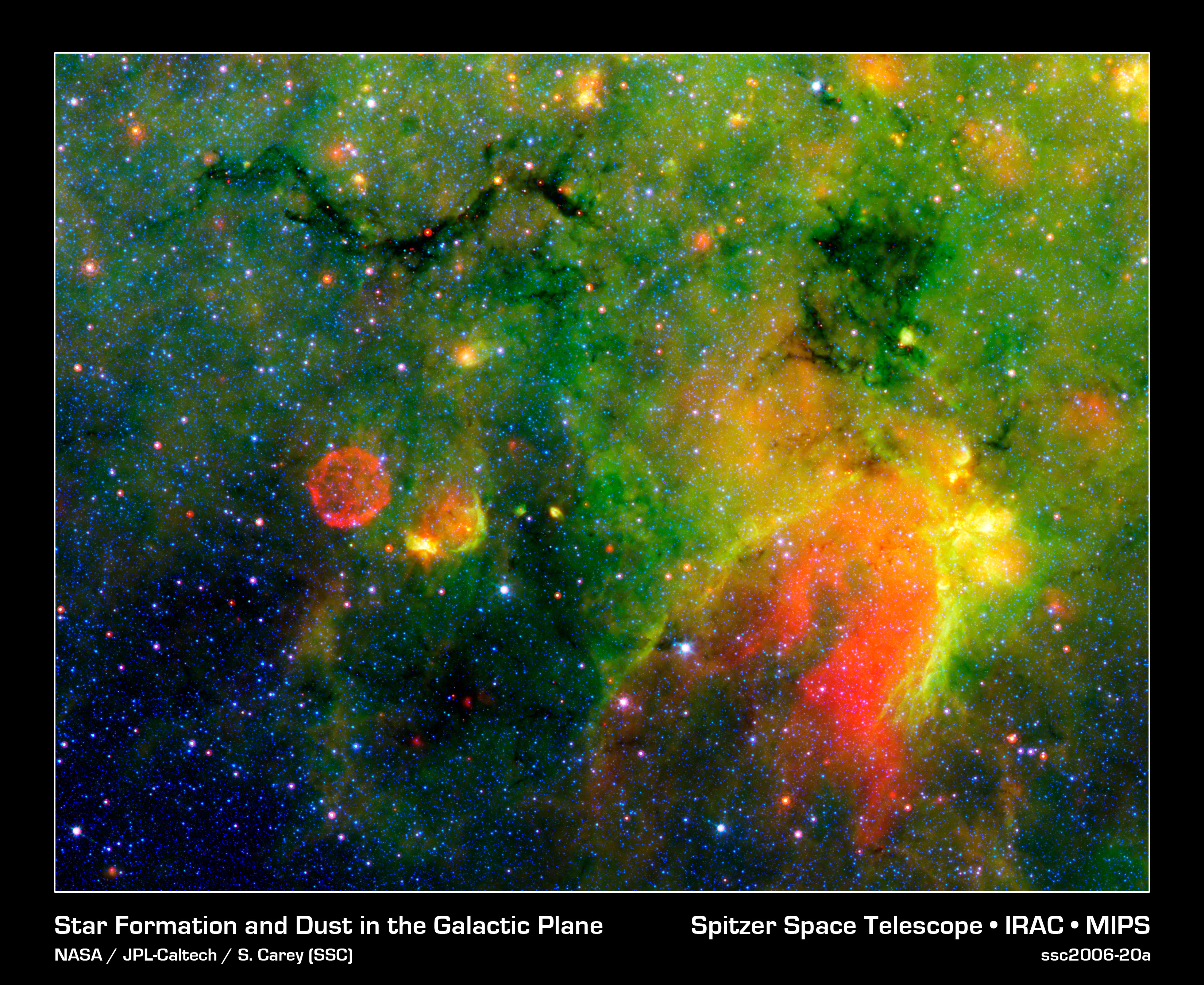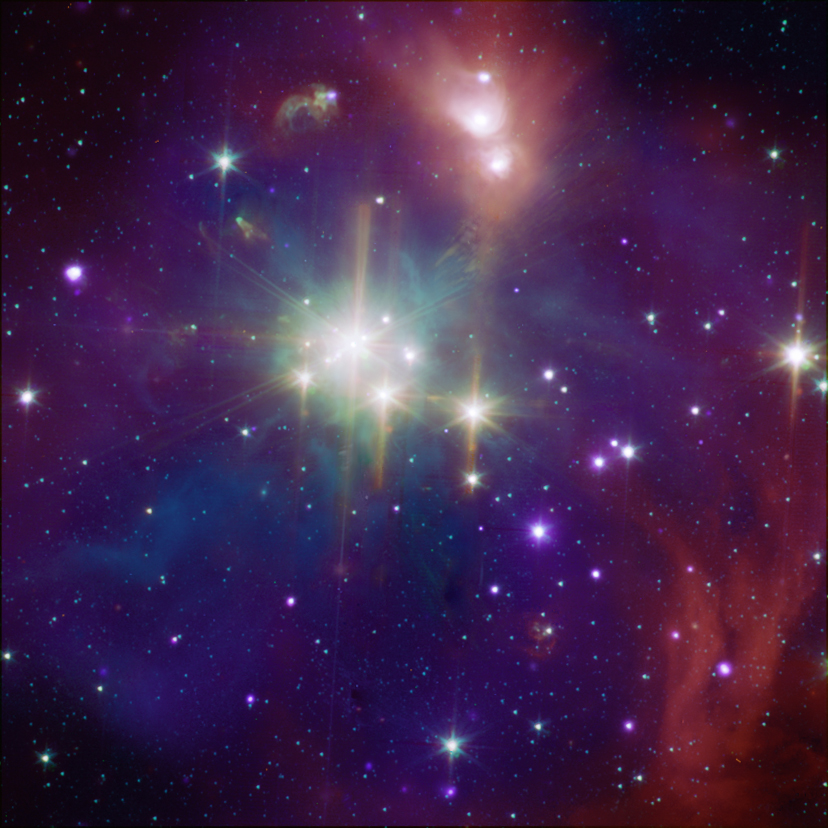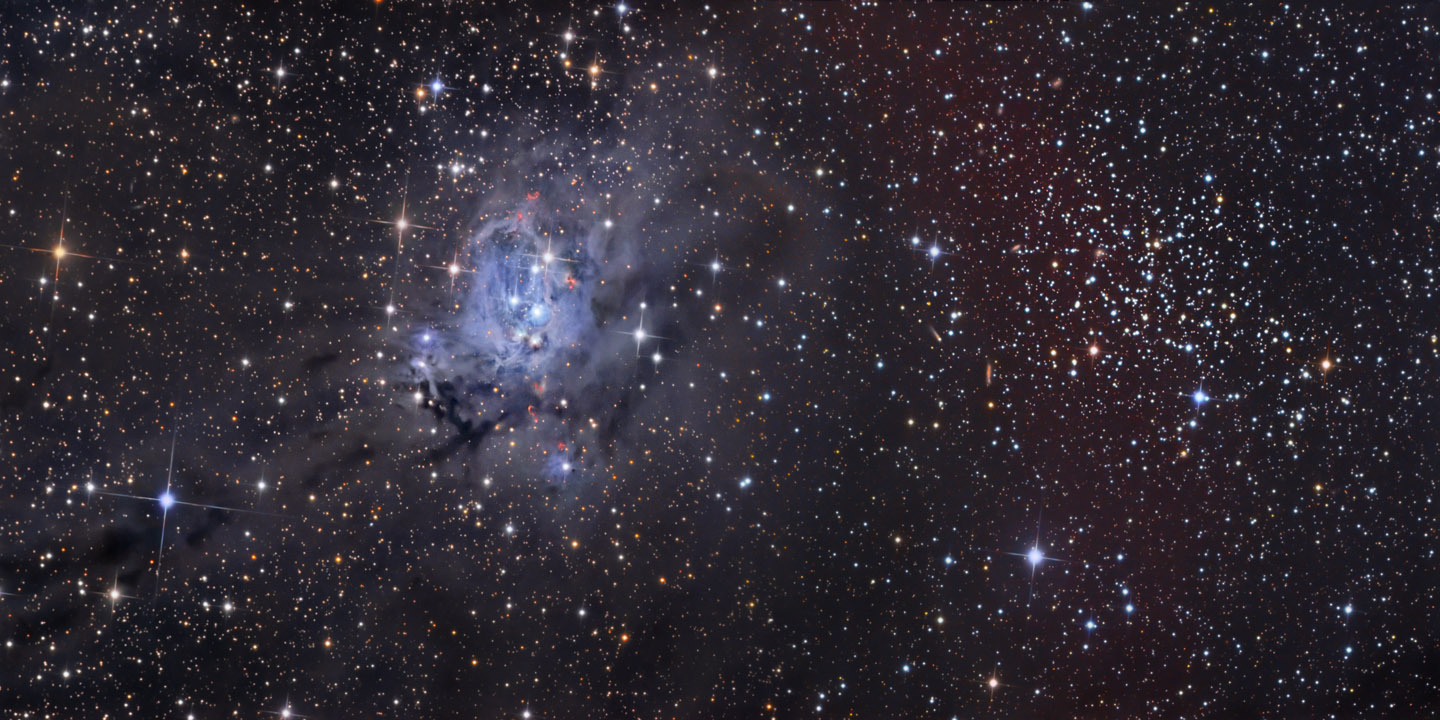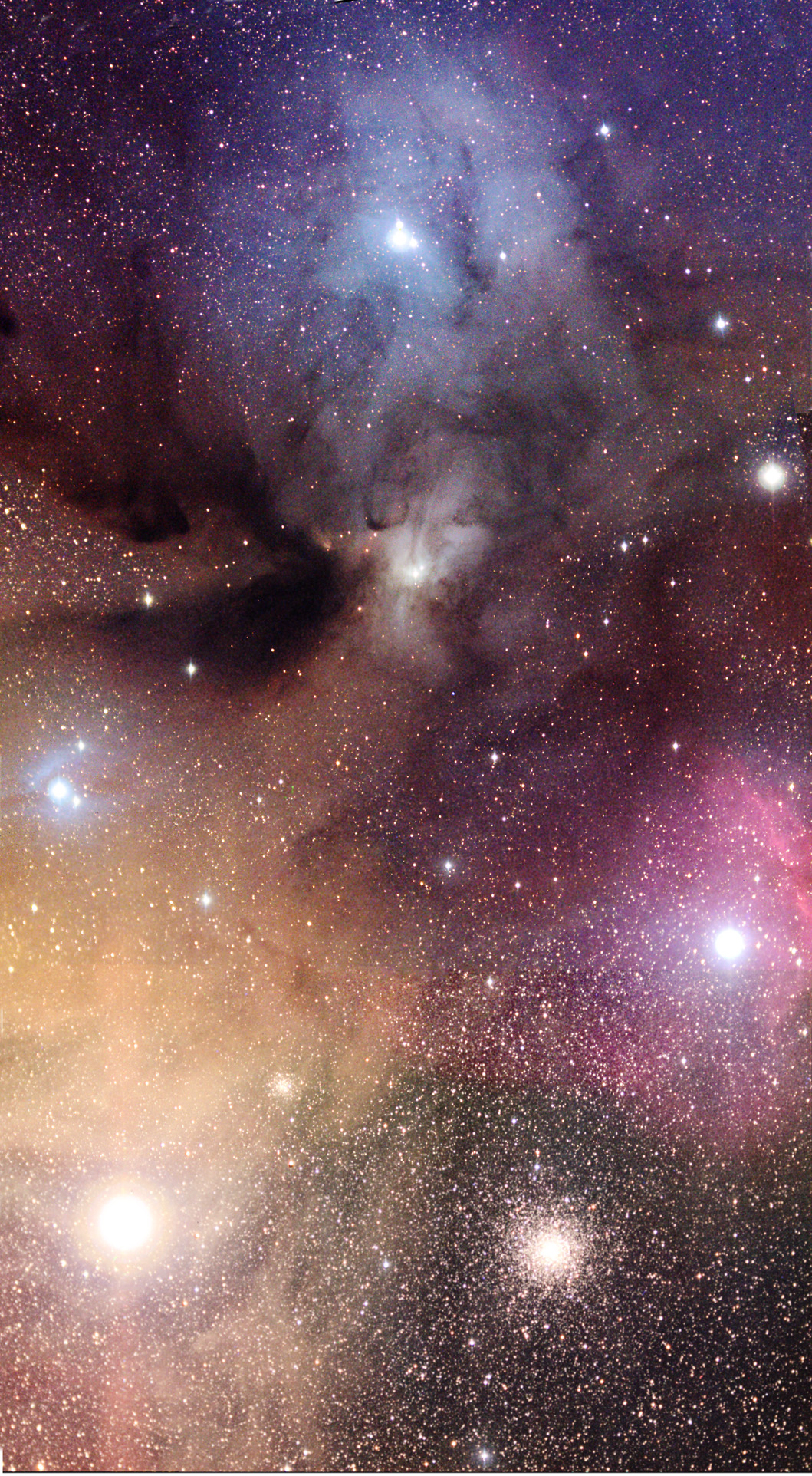
In IRDC G11.11-0.11, heat given off by forming stars creates the vast glowing fields of dust and gas. Many of the red spots are dust shrouds that surround young newly formed stars. Th red sphere is the remnant of a supernova and spans 150 light years. This areas is 10,000 of light years away from Earth towards the constellation Sagittarius.


